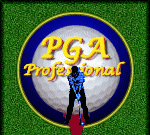Ask the Pro Archive - 2007
|
Here are all the golf questions and answers that appeared on the "Ask the Pro" page in 2007, from most recent to least recent, top to bottom. Links in the left menu column give a "keyword" indication
of the topic and will take you directly to that entry on this page. Also see the Ask the Pro Archive Index for longer descriptions in categorized and somewhat alphabetized form.
|
|||||||||||||||||||||
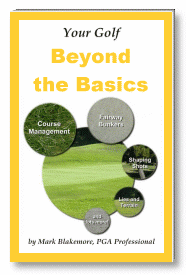
|
Question:
December 28, 2007
When hitting from an sidehill lie with the ball above your feet where should you aim? Right, center or left of the flag?
Angelica Iglesias
New York, NY
Answer:
Hi Angelica,
All else being equal, a right-hander would aim (some amount, based on feel and experience) to the right of the flag in that case. The topic of playing from uneven ground is pretty involved and is covered thoroughly in my book "Beyond the Basics."
Thanks for visiting PGAProfessional.com. MB
Miscellaneous > Golf course-related > The amount of land or area for a golf course
Question:
December 12, 2007
How much is the area of a standard golf course?
Rao Muqeet
Lahore, Punjab, Pakistan
Answer:
Hi Chris,
I'm sure it varies widely from course to course, but according to the National Golf Foundation and Golf Course Superintendents Association the average modern 18-hole course has up to about 150 acres of land, with about 75 acres of that being maintained grass. Thanks for visiting and best of luck with your game. MB
Rules, Etiquette and Procedures > Designated drop area penalty
Question:
November 28, 2007
Could you explain designated drop area. I was recently in a tournament whereby it was explained to me that if I hit one in the water that is 1 stroke, 2 out, hitting 3. However, if I chose to hit from the drop area I would need to take an extra stroke for walking to the drop area and would be hitting 4 from there. Do the Pros use this rule? I can't remember anyone taking an extra stroke.
Candace Payette
Cleveland, Ohio
Answer:
I've never heard of that, Candace. A designated drop area is usually in place for the reason that there really isn't a practical area to drop as prescribed in the rules. It's still the same 1 stroke penalty. A tournament committee can certainly make local rules in unusual situations, though. See also the rules FAQ to get into more detail and check further.
Thanks for visiting and best of luck with your game. MB
Rules, Etiquette and Procedures > Where to stand and how to get a read when another player putts
Question:
November 14, 2007
Where should I stand and how do I "step in" to see the line a putt takes after an opponent has putted the ball. I have seen it done by pros in matches.
Tom Sweetman
Flat Rock, NC
Answer:
Hi Tom,
Stand off the green (or "respectfully far away"), either behind the ball and "courteously" removed from the exact line of the putt or on the opposite side of the hole in the same manner. (All the above means "do not be intrusive," and that it is a subjective thing but, depending on the length of the putt and the situation, at least a few yards away from the player and a few feet off the line.) Once the putt is struck, but not before, then move more toward the exact line to get the best perspective. Do not move before the putt is on its way. Watch how experienced players proceed in these situations.
Thanks for visiting and best of luck with your game. MB
Long Game > General > Falling forward off balance in the swing
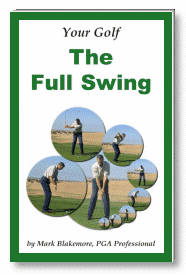
|
Question:
October 25, 2007
... I fall off to the right when driving or attempting to hit long shots. Is this caused by overswinging?
Harry Ratliff
New Lexington, OH
Answer:
Hi Harry,
If you are right-handed and you mean that you fall forward toward where the ball was and have to catch yourself with your right foot, etc., that may be made worse by overswinging but usually the main problem is not getting onto your left side and finishing the swing, where you will be in balance on top of your forward leg. Compare where you end up in your practice swings to where you end up with your swing through the ball. It is very common to be okay in the practice swings but to "quit on the shot" when hitting the ball. This topic and the rest of the movements of the golf swing are covered thoroughly in a systematic and easy-to-understand way in my book "The Full Swing."
Thanks for visiting PGAProfessional.com. MB
Miscellaneous > Terminology - Words and Phrases > The terms "out" and "in" for the front and back nine
Question:
October 10, 2007
Why are the first 9 holes called "out" and the last 9 called "in"?
Chris Morbelli
Staten Island, NY
Answer:
Hi Chris,
Some golf courses -- and St. Andrews, the most well-known of the original golf courses in particular -- have a front side (first nine holes) that does not return to the clubhouse. So it is called the outward nine (or "out" for short) because it goes out away from the clubhouse. Then the inward nine, or "in", returns to the clubhouse. Another very famous golf course that has this configuration is Pebble Beach. Thanks for visiting and best of luck with your game. MB
Rules, Etiquette and Procedures > Colors of stakes, lines for hazards, OB and yardage markers on a golf course
Question:
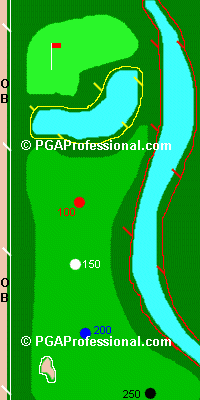 |
Some basic course markings |
September 21, 2007
Could you please explain the different colored markers on a golf course. Are they for distances or out of bounds or both?
Mitchell Gerard
Wantagh, NY
Answer:
Hi Mitchell,
Out of bounds is usually marked by fences, white stakes or white lines -- white lines can also indicate Ground Under Repair (see diagram on right - out of bounds on left side and bare patch of ground under repair on left side of fairway).
Water hazards are marked by either yellow stakes or lines and lateral water hazards are usually marked by red stakes or lines.
The most common color coding for distance markers in the U.S. is red (100 yards), white (150 yards) and blue (200 yards), with occasionally black (250 yards) -- but colors of distance markers can vary widely. See also the rules FAQ.
Thanks for visiting and best of luck with your game. MB
Equipment > Wood numbering system
Question:
September 9, 2007
Why aren't fairway woods numbered the same as irons? I have never seen a 2, 4 or 6, however you can get a 3, 4, 5, 6, 7, 8, or 9 iron?
Lynn Euzebio
Orange, CA
Answer:
Hi Lynn,
You can (or could) get woods of any number, up to the most lofted wedge, depending on how hard you look. 2 and 4 woods/metals are not uncommon, though not as common as 3, 5, 7 or even 9 woods. 6, 8, 10 and higher are much less common but there are (or were) companies who make full sets of woods designed to replace irons entirely. I've seen woods numbered as high as 15 before, and there may be even higher numbers. I haven't really checked into it as I wouldn't have the faintest idea what to do with clubs like that, myself.
And, as if it's not already a bit confusing, now hybrids vary widely in their specs across manufacturers and do not always easily equate to a particular iron or wood, so that means there is yet another numbering system.
Thanks for visiting and best of luck with your game. MB
Long Game > General > How to stop hitting from the top

|
Question:
August 28, 2007
How do I stop hitting from top with all clubs to make correct impact?
Peter Hall
Brighton, Sussex, U.K.
Answer:
Hi Peter,
The general idea is to allow your arms/hands to relax more and allow the club to "swing" rather than to tense up and hit with the arms and hands. This topic and the rest of the movements of the golf swing are covered thoroughly in a systematic and easy-to-understand way in my book "The Full Swing."
Thanks for visiting PGAProfessional.com. MB
Miscellaneous > Professional golf-related > Average height of professional golfers, advantages of being a tall or short golfer
Question:
August 11, 2007
What is the average height of a professional golfer? Is there any advantage to being short or tall in golf? A tall friend of mine insists it is an advantage to be short, I disagree. Thanks.
Mary Rigoni
Kingsford, MI
Answer:
Hi Mary,
I don't know if that information is available without much narrower paramters -- not to mention that it probably changes. At this moment (August 11, 2006) the top 5 money leaders on the PGA Tour have an average height of almost 6' 2" (but number 6 on the list is 5' 9").
It used to be thought that smaller golfers had an advantage, mainly because some of the more notable players in history were in the 5' 9" ballpark. That's pretty much old thinking in this day and age, with athleticism at the generally higher level that it is now and with a bigger field.
In theory, it makes sense (to me at least) that there would be some advantage to shorter players when playing in substantial wind and from uneven ground, as controlling a higher center of gravity in those situations should be more difficult. But in terms of seeing over the lip of a bunker face I think the taller players have the advantage (heh heh heh).Just teasing -- all else being equal taller players can produce a wider swing arc and therefore would have some small advantage in terms of getting more distance and being able to create a higher trajectory when necessary. But all else is not usually equal, and that's why it's interesting. I'm sure there are both advantages and disadvantages either way, just like in most sports and life in general.
The shortest male professional that I am aware of is Ian Woosnam at about 5' 4" and the tallest is Phil Blackmar who, if I remember correctly, is at about 6' 8". There may be other more extreme cases that I'm just not aware of, or that are not coming to mind right now. I don't know what the ladies' stats are, but each player on each of the main tours has a bio on their respective tour's website, so you can do some research if you really want to.
Thanks for visiting and best of luck with your game. MB
Miscellaneous > Terminology - Words and Phrases > The phrases "be the number" and "be right"
Question:
July 24, 2007
I was watching the PGA the other day and I heard a man say "be the number" as he knocked his ball close to the hole nearly holeing out. What does this actually mean?
Ty Pearson
Melbourne, Australia
Answer:
Hi Ty,
The expression "be the number" is similar to "be right", which is another commonly heard expression. It means that the player knows that they have struck the ball well, it is definitely heading in the right direction (probably right at the pin), and now they hope that the club they selected for the shot (the "number" of the club) is the correct choice so the distance the shot travels will also be good. Thanks for visiting and best of luck with your game. MB
Rules, Etiquette and Procedures > How many balls a player can carry, limit on number of balls
Question:
July 11, 2007
Is there a maximum number of golf balls that a tour player [or any player] is allowed [to carry] in [their] bag?
Tim Moores
Faro, Portugal
Answer:
Hi Tim,
No limit. See rules. Thanks for visiting and best of luck with your game. MB
Miscellaneous > Terminology - Words and Phrases > The phrases "inside-out" and "outside-in"

|
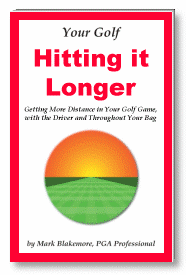
|
Question:
June 28, 2007
Explain outside in or maybe it's inside out?
Dianne Hice
Canyon Country, CA
Answer:
Hi Dianne,
Pretty simple really: "Inside" is on the same side of the target line that the golfer is standing and "outside" is on the other side of the target line from the golfer. Outside-in is a swing path where the club head comes from outside the target line and across to the inside as it passes through impact. An inside-out swing would be the opposite. A "straight" swing is sometimes referred to as an inside-square-inside swing. See picture.
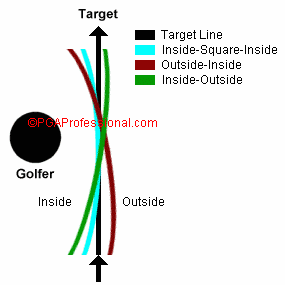
This and other important details of learning the golf swing are covered thoroughly in a systematic and easy-to-understand way in my book The Full Swing
And everything you can do to hit the ball your longest is covered in my book Hitting it Longer: Getting More Distance in Your Golf Game, with the Driver and Throughout Your Bag Learn more... Thanks for visiting PGAProfessional.com. MB
Equipment > Difference between Cadet gloves and regular gloves
Question:
June 6, 2007
What is the difference between a cadet style and regular style glove?
Jayson Burkette
Tampa, FL
Answer:
Hi Jayson,
Cadet is for shorter fingers/wider palms. Thanks for visiting and best of luck with your game. MB
Miscellaneous > Terminology - Words and Phrases > Hearing the phrase "unforced error" on TV
Question:
May 26, 2007
On TV I hear announcers refer to an "unforced error." What [then] is a forced error?
Bob Hale
Spring, TX
Answer:
Hi Bob,
The expression "unforced error" is, I believe, unique to tennis and makes no sense in golf. So unless I am woefully uninformed it is an inappropriate use of the phrase. In tennis an unforced error is a mistake and lost point that was not directly caused by the other player's good stroke. The announcers you are referring to may just be using the phrase to mean a mistake that a seasoned golf professional would be expected NOT to make, or (to give them the benefit of a big stretch) a mistake in a match play-type situation that was not caused by another player's having hit a good shot that theoretically applied pressure to the player that made the error. Thanks for visiting and best of luck with your game. MB
Rules, Etiquette and Procedures > What is "reasonable evidence?"
Question:
May 10, 2007
What is "reasonable evidence?"
Kevin Maher
Salem, MA
Answer:
Hi Kevin,
That's a pretty loose rules phrase implying the use of sensible judgement in determining if your ball is in a water hazard or not. As an example, let's say you hit your tee shot over a blind hill and you and everybody in your group sees it go to the right. Then when you walk over the hill to find your ball you see that there is a lake there to the right and dry wide open fairway all the way up to the lake (nowhere that your ball could be hiding) and you can't find your ball anywhere. That's pretty reasonable evidence that your ball is in the hazard, eh? However, if there was a bunch of deep rough or bushes before the water's edge you would not necessarily have reasonable evidence that the ball was in the hazard, and you may have to play it as if it were a lost ball. So it depends on all the circumstances. See also the rules FAQ. Thanks for visiting and best of luck with your game. MB
Short Game > Opinion about sidesaddle putting
|
Work on your game with the author of this website in person... Or get Mark's series of paperback books covering the entire game in detail. | |
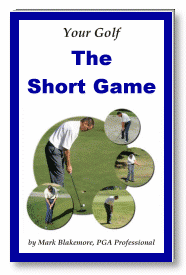
| |
Question:
April 28, 2007
I've been looking for something to give me an edge in putting. I found a putting meathod called sidesaddle putting. It looks pretty goofy but I can see why it would work. If I want to try it, I have to buy a longer putter. Do you know anything about sidesaddle putting and would it be worth a try?
C.J. Galdes
Grand Rapids, MI
Answer:
Hi C.J.,
There are very few players using the sidesaddle style (I have to confess that it seems like a "last resort" type of thing, to me).The most famous and successful player that I am aware of who used the sidesaddle putting style during some portion of their career was Sam Snead. He did it as a last resort, as an older player, after he developed a case of the yips. But, if I remember correctly, he used a more conventional style in winning almost all of his record 81 tournaments.
To me, the most obvious potential benefit of the sidesaddle style is the visual/targeting aspect (both your eyes are looking at the target, generally the same way as they would when reading a putt, rather than sideways with one eye closer to the hole, as in a normal putting setup). I'm not sure that that makes up for the other downsides that I perceive (awkwardness, decreased touch, etc.).
Snead did it with a normal length putter, from what I remember, so you wouldn't have to get a longer putter unless that felt better to you -- it's personal preference.
There is a lot of flexibility in putting technique because of the simplicity and scale of the shot, so if you can make it work that's the bottom line -- far stranger things than sidesaddle have "worked" for a very tiny minority of players, at one time or another. But since sidesaddle is a style that does not seem to be effective for any substantial percentage of golfers, and no top players that I have seen are using it, I would recommend making your best attempt at understanding and developing a more conventional style first. For the details on developing all the aspects of putting you need to make you the best putter you can be consistently see my book "The Short Game."
Thanks for visiting PGAProfessional.com. MB
Long Game > Irons > Filling in a yardage gap in the long irons
Question:
 |
April 10, 2007
I want to remove the 4 iron from my bag to keep 14 clubs (I have a 3 hybrid). My question is how do I handle that 3-5 gap now which is about 20-25 yards? I hit my 3 hybrid about 200-205 and my 5 iron about 175 pretty consistently. I don't run into that 4 iron (190-195) distance too often ... but when I do, I'm stuck and have to lay up for another stroke.
Carleton Robinson
Alexandria, VA
Answer:
Hi Carleton,
Learn to hit both a power draw with the 5 iron (goes farther) and a soft cut with your 3 hybrid (goes less far) and that will fill the gap easily. For details on these shots see my book "Beyond the Basics."
Thanks for visiting and best of luck with your game. MB
Long Game > General > How to know if your swing is "repeatable" and "consistent"
Question:
March 16, 2007
How do I know if I have a repeatable and consistent golf swing?
Omar Taylor
Arlington, TX
Answer:
Hi Omar,
"Repeatable" and "consistent" would need to be defined precisely for me to give you a precise answer. Example: if you hit the ball in some way every time (never whiff) that's very repeatable in a general sort of way, though it may or may not indicate a high level of golf skill. And if you always shoot between 120 and 130 that's very consistent, though, again, it may or may not be the kind of golf you aspire to play. You can see that the definitions are essential to the answer, and it would depend on who you were comparing yourself to.
You can assess your swing performance by your results, using statistics. Greens in regulation is probably the best indicator of full swing performance, but you could just as easily keep track of greens in one more than regulation (or whatever is appropriate for your skill level).
You can also use more subjective measurements, like what percentage of the time you feel like you make good solid contact with the ball. But I would recommend also keeping track of your full swing performance with stats and then comparing your stats to the types of players (handicap, average score, age group, etc.) that you consider your peer group. That would give you a good idea as to whether or not you had a repeatable and consistent swing by that standard.
Keep track of your stats and also get an official USGA handicap. Thanks for visiting and best of luck with your game. MB
Miscellaneous > Golf course-related > Who hits from Red, White and Blue tees?
Question:
March 6, 2007
Who should hit from which tee location? I was told men hit from blue, ladies from white, and kids from red. Is this correct?
Michael Donald
Las Vegas, Nevada
Answer:
Hi Michael,
When Red, White and Blue are the tee colors, usually it's Ladies/Red, Men/White, Championship/Blue (lower handicaps and professionals). Junior golfers' tees vary with age and ability.
Also, some golf courses have other color schemes and some have more than just 3 sets of tees. Each golf course will have their set up noted on the scorecard. Thanks for visiting and best of luck with your game. MB
Long Game > General > Cause of inconsistency, hands versus big muscles
|
Work on your game with the author of this website in person... Or get Mark's series of paperback books covering the entire game in detail. |
Question:
February 20, 2007
I'm 36, a 12 hcp and have been playing for 20 years. I'm also a full time drummer. I have very strong forearms/wrists and have developed excellent hand control/coordination with both of my hands in concert with my lower body. I have a great sense of rhythm and timing as a drummer in coordinating my four limbs.
HOWEVER. I have always struggled with consistency in my game. Length has never been an issue but control has killed me. I've always been a long hitter with all my clubs due to the club head speed I can generate with my hands through impact. I'm very solid with a wedge in my hands from 100 yds in which saves me a lot of strokes but I'm all over the place getting there!
I've always had a strong (drummer) grip and I'm willing to change it. I fight blocks and hooks. I'm a feel type of player and want to feel positions at certain points in the swing. Those mental images have helped me the most. Years of tips, books and articles have caused me to try many things but my Holy Grail quest is to find a solid (slot) position at the top of the backswing where I can feel confident in taking a good rip at it.
I've read a lot (and have recently focused on) a swing that generates power from the big muscles while the hands and arms just go along for the ride. I think that approach is perfect for a lot of people but I feel my years of drumming and the resulting coordination/strength in my hands, wrists and arms and feet should be used as an asset in the swing. I've already ingrained the muscle memory in my hands to be strong. I want to use it to my advantage!
Thank you for listening.
Sean Matthews
Framingham, MA
Answer:
  |
Hi Sean,
I didn't really see a question in there anywhereBut just as feedback for you I think you have a couple options to develop more consistency.
Though I understand that you want to actively use your hands and arms based on your experience and intuition, it is very likely that that is the underlying cause of your inconsistency. Thanks for visiting PGAProfessional.com. MB
- Work more toward the concepts you mentioned in the second to last paragraph. To use a drum analogy I know that to develop speed and feel as a drummer your hands must be relaxed and sensitive to the weight and leverage of the stick, using the natural resilience of the tissue of the hands and fingers in a spring-like fashion. I have friends that are drummers, and I played the drums myself as a 12-14 year-old. We have had discussions, on occasion, about technique and feel in drumming and this concept has come up. It's a valid way to describe some of what goes on in a good golf swing as well. I cover this and all aspects of getting your maximum distance in detail in my books ""The Full Swing" and "Hitting it Longer: Getting More Distance in Your Golf Game, with the Driver and Throughout Your Bag."
Alternatively,
- Develop a sequence of moves that you can repeat very reliably (by feel) to assure that the ball can only move in one direction, not in either direction (a fade is usually easiest for most people to get a handle on). You'll most likely need to work with a professional in person on this but I cover the topic of shaping shots in detail in my book "Beyond the Basics."
Miscellaneous > Golf course-related > Pin placement relative to edge of green, how close can the hole be to the edge of the green?
Question:
February 12, 2007
Is there a guideline or rule that covers how close to the edge of the green a pin placement can be? I had the pleasure of shooting at a pin today that was less than 5 feet from the edge. I think that is a bit close.
Brian Gillette
Bloomington, IL
Answer:
Hi Brian,
There's no rule about it, and it is up to the golf facility or tournament committee, etc., in the end. My understanding has always been that about 12 feet (or 4 paces) from the green's edge was the minimum recommendation. But not everybody does it this way -- especially if the expected shot into the green is a short pitch and the green holds well. I can only remember once or twice having played a hole on which the pin was cut closer than 12 feet. Less than 5 feet does seem absurd, but perhaps there was some maintenance reason on that particular day; check with the course staff.
Thanks for visiting and best of luck with your game. MB
Miscellaneous > Other > Ball does not go as far over low lying spots of the course
Question:
January 23, 2007
Why does it always take 1 or 2 club lengths longer to make the distance across a low place in the course, depending on how deep the low place is. I have golfed for many years and it is the same on all courses. I always tell the guys that golf with me to go down another club when we come to the low places. They ask me why and I can't tell them why, just do it.
Dave Barber
Raritan, ILL
Answer:
Hi Dave,
From my experience that is not true in every situation. But where it is true I have heard it attributed to the fact that warm air rises and cold air sinks, therefore the air is heavier in the low spots, causing the ball not to go as far as it does in the less-heavy "high" spots. That may or may not be close, but it's surely an air pressure, temperature, density, resistance, friction thing, I would think. A meteorologist could probably give you a much better answer -- and any meteorologists or "in-the-know" persons on this topic are invited to provide the official and technically astute explanation, which I will gladly post.Thanks for visiting and best of luck with your game. MB
Miscellaneous > Other > Double-hit, hitting the ball twice with one swing
Question:
January 4, 2007
Can you explain what causes a double hit of the golf ball. I have done this once in my life and don't know why it happened. Is there a penalty for this in addition to hitting the ball two times with one swing? Do both hits with the one swing count?
Ted Mayer
Athens, Georgia
Answer:
Hi Ted,
There may be variations on this, but it's usually when the club gets caught by the grass, sand, etc., and the follow-through is delayed and then forced. The ball is directionally farther to the left (for a right-handed player) than intended as a result of the club face having turned due to the the snag. So when the club gets re-accelerated the ball is in the path of the clubhead. It could also probably happen just because the ball did not come off the club face with the intended compression and speed, so when the club springs back into action after the snag it catches up with the ball. I guess you'd probably have to watch the occurence in slow motion to see exactly what happened in each case.
Whatever the cause, the odds of it happening seem really low, don't they? But just about everybody who has been playing for a while has done it, in practice if not when playing. Yes, it counts as two srokes (or, technically, the original stroke and a one stroke penalty). See the rules for more. Thanks for visiting and best of luck with your game. MB
